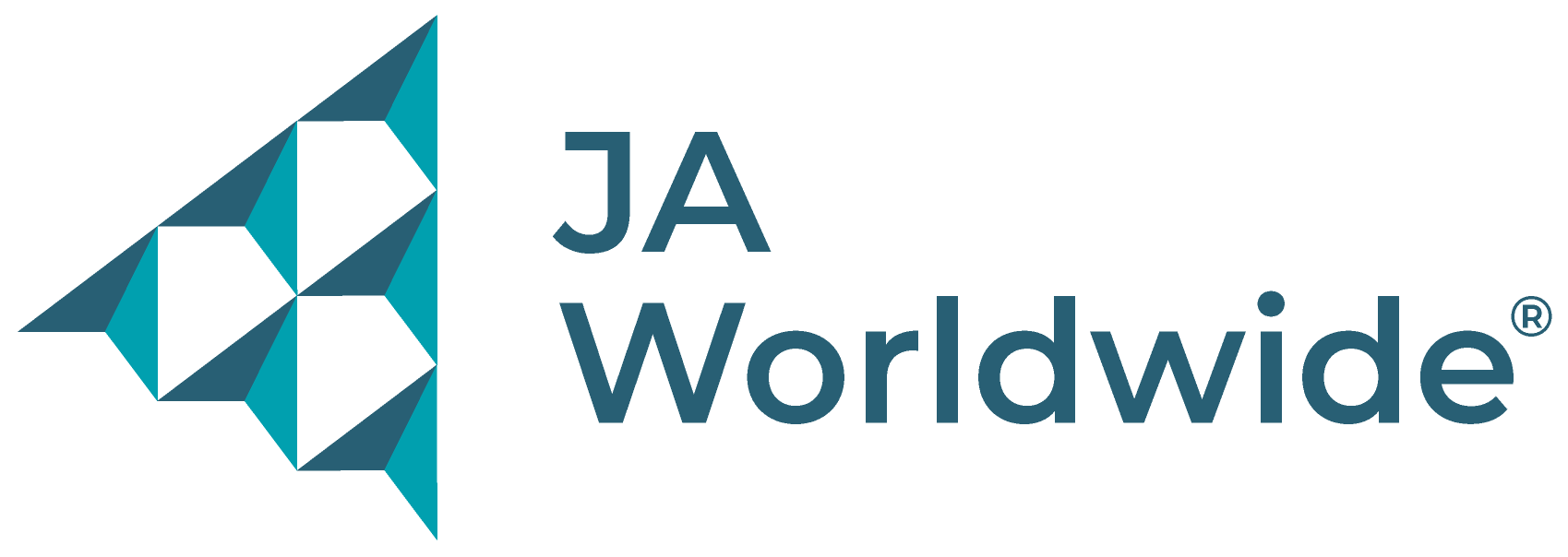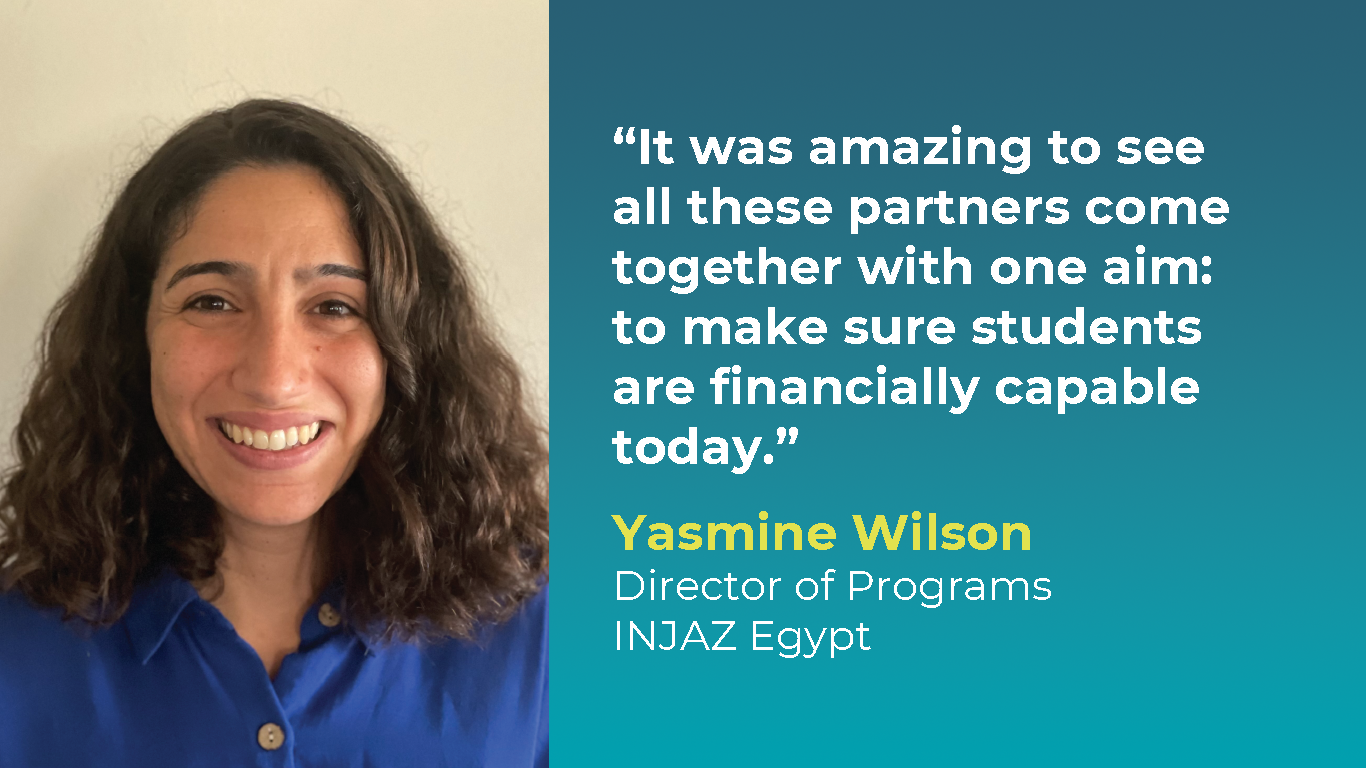Teacher and Volunteer Voices: How are students learning to be financially capable?
In 2021, JA Worldwide piloted a new financial education initiative, JA Building a Financially Capable Generation. We asked JA educators and HSBC volunteers about their experience developing and delivering the blended learning program.
What has the JA & HSBC Financial Capability App taught your students about being financially capable?
Dominique Ghazar, Manager of Corporate Responsibility, HSBC Middle East: I love this question. It is impressive to hear young people’s reaction to money. As soon as they hear that I work for a bank, the first question they ask is “How much of a loan I can get at my age, or “Can I get a credit card at my age?” It actually makes me reflect because I have never been asked, “Can I invest at my age?” or “Can I have a saving account at my age?” It is really interesting because The widely available financial products – student loans, mortgages, credit cards, pension accounts, – have proven to be complex and difficult for individuals who do not have the right knowledge to avail from them. So while financial developments have their advantages, by permitting tailored financial offering and more people to access credit, they also impose on the beneficiary a much greater responsibility to borrow, save, invest, and dissimulate their assets sensibly and I hope that the students acquired this knowledge through the component of the program.
Yasmine Wilson, Director of Programs, INJAZ Egypt: I've seen the progress among the students, especially those who entered the local challenge. I've seen the progress in terms of how they not only learned but the applied the knowledge. The INJAZ Egypt winners started a financial capability club at their school called “The Penny Pal Club.” The club invited younger kids to come and then they would give them activities that taught them how to save money and how to not save money in terms of the pocket money that we take, and how to determine what they want versus what they need. It also taught the difference between income and expenses. Honestly, for me, seeing the students actually doing something with what they learned was wonderful.
Overall, I think the program was great. The whole experience—from the students to the teachers to the volunteers—was great. It was amazing to see all these partners coming together for one aim, to make sure that these kids are financially capable, not just when they grow up, but now. They learned that, at 12 years old, they can actually be financially capable people.
Tina Li, Senior Corporate Sustainability Manager at HSBC: Before they joined the sessions, they only knew that they cannot spend money if they don’t have money. That is very easy and direct thinking, but they didn’t have sufficient tools to help them to make financial decisions. This program gave them many tools, like a planning table or budgeting templates.
The most important thing for them to know is not only the concepts but how to use the tools, whether it’s an app or a simple Excel spreadsheet to help them to manage wealth.
I have a great appreciation for this project. My job focuses on social responsibility, so I see many of the social problems related to lack of financial sense, especially those caused by a lack of financial literacy education in mainland China over the past three or four years. Nowadays, lots of new graduates feel compelled to spend and buy things, like makeup or new clothes. It’s very easy for teenagers to borrow money, and sometimes put them in big trouble.
When I grew up, it was very hard for us to get credit cards. Now it’s very easy to get one and borrow a significant amount of money. It’s as simple as clicking on a mobile phone. In short, it’s easier for them to get into trouble by overspending because it is easier for them to borrow money. Unfortunately, it is harder for them to pay down debt. I think financial capability should be embedded into the basic education curriculum in every country.
What do students you work with know now about finances that you/they didn’t know before using has the JA & HSBC Financial Capability App?
Dominique Ghazar, Manager of Corporate Responsibility, HSBC Middle East: Young people often learn about money informally by observing and listening to their caregivers, influential adults, and peers. And often they are not regularly introduced to more formal instruction on money matters—for example, through a classroom curriculum or other training on saving, spending, allowances, and the importance of focusing on short-term goals (i.e., purchasing an item, saving money, paying off debt) to be able to get to long-term financial goals (i.e., saving for college, buying a house) – I am very proud of the partnership between HSBC and JA for the past 15 years, and about the outcome of the pilot, and I look forward to seeing the enrollment on the program across more markets and ultimately to influence curriculum change amongst different stakeholders.



